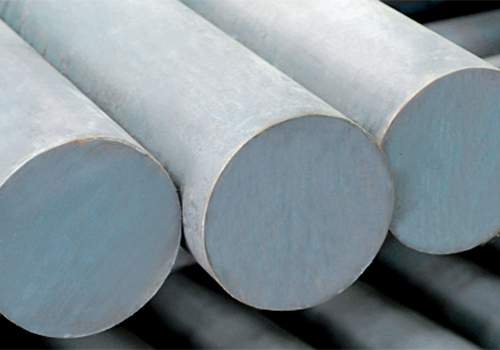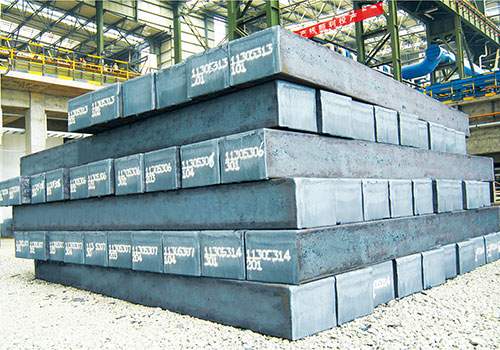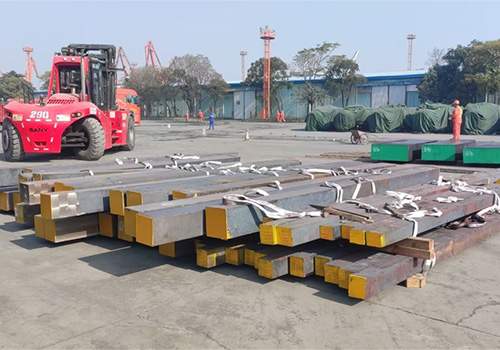
Understanding the Composition of 1020 Steel and Its Uses
Table of Contents
Introduction

1020 steel is one of the most widely used types of carbon steel, favored for its versatility, affordability, and ease of fabrication. It is a low-carbon steel, which makes it an excellent option for a wide range of applications in industries such as manufacturing, automotive, construction, and machinery. One of the most important aspects of 1020 steel is its composition, which directly influences its mechanical properties, strength, durability, and resistance to wear.
In this comprehensive guide, we will delve into the composition of 1020 steel, discuss its key elements, explore its uses, and examine how its properties make it suitable for different applications. Understanding the composition of 1020 steel is critical for selecting the right material for your needs and optimizing your manufacturing processes.
What is 1020 Steel?
1020 steel is a mild carbon steel that contains approximately 0.20% carbon by weight. It is part of the SAE (Society of Automotive Engineers) steel classification system and is known for its relatively low carbon content, which makes it easy to weld, machine, and form.
Key Characteristics of 1020 Steel
- Carbon Content: 0.18–0.23%
- Malleability: High malleability due to low carbon content.
- Tensile Strength: Moderate tensile strength, typically around 370–700 MPa.
- Hardness: Can be heat-treated to increase hardness.
- Weldability: Excellent weldability due to low carbon content.
Typical Applications of 1020 Steel
- Automotive components such as shafts, gears, and axles.
- Structural applications, including beams and supports.
- Parts requiring low to moderate strength and ease of fabrication.
- Machine components that require forming and welding.
Composition of 1020 Steel
The composition of 1020 steel is primarily based on iron, with carbon being the key element that determines its strength and hardness. It also contains a small amount of manganese, which improves hardenability and tensile strength, as well as trace amounts of other elements.
Chemical Composition Table
| Element | Percentage (%) |
|---|---|
| Carbon (C) | 0.18–0.23 |
| Manganese (Mn) | 0.30–0.60 |
| Phosphorus (P) | 0.04 max |
| Sulfur (S) | 0.05 max |
| Silicon (Si) | 0.10–0.35 |
| Iron (Fe) | Balance |
This table outlines the basic composition of 1020 steel. The percentage of carbon is the most important factor as it dictates the steel’s hardness, strength, and overall mechanical properties. Manganese helps in improving the steel’s toughness and ability to withstand stress. The small amounts of phosphorus and sulfur are impurities that can affect the steel’s workability, but they are typically kept within controlled limits.
How the Composition of 1020 Steel Affects Its Properties
The composition of 1020 steel plays a direct role in its properties. Let’s take a closer look at how each component impacts the steel’s performance and usability in various applications.
Carbon Content and Its Effects
The carbon content in 1020 steel (0.18–0.23%) contributes to the steel’s hardness and strength. However, this also means that 1020 steel is less ductile than higher-carbon steels, making it more suitable for applications that require moderate strength and hardness but not extreme toughness.
Manganese for Improved Hardenability
Manganese in 1020 steel enhances hardenability, making it possible to heat treat the steel and improve its hardness. Manganese also increases tensile strength, helping the steel withstand greater amounts of stress and wear during use.
Silicon and Its Role in Steel
Silicon is added to 1020 steel to improve its ability to resist oxidation. It also helps in the deoxidizing process during the manufacturing of the steel, ensuring better quality and uniformity. Silicon contributes to the steel’s resistance to corrosion, though it does not make the steel immune to rust.
The Impact of Impurities
The impurities phosphorus and sulfur in 1020 steel are kept at very low levels. These elements, if present in excess, can weaken the steel, making it more prone to cracking and poor machinability. However, the controlled levels in 1020 steel allow for good workability and strength.
Benefits of Using 1020 Steel
Easy to Weld and Machine
Due to its low carbon content, 1020 steel is easy to weld and machine. This makes it an excellent choice for applications requiring detailed fabrication, such as automotive components and machinery parts.
Cost-Effective
1020 steel is relatively inexpensive compared to other high-carbon and alloy steels. This makes it a cost-effective material for manufacturers who need to create large quantities of parts without breaking their budgets.
Versatile Applications
1020 steel’s balanced properties of strength, hardness, and ductility make it suitable for a wide range of applications, including structural components, automotive parts, and equipment.
Good Strength-to-Weight Ratio
Despite its low carbon content, 1020 steel provides a good balance of strength and weight. This makes it ideal for components that need to carry weight without adding excessive mass, such as shafts and axles.
Excellent Formability
With its low carbon content, 1020 steel is highly malleable and can be easily formed into various shapes and sizes, making it a great choice for projects that require intricate designs or custom manufacturing.
Common Uses of 1020 Steel


The versatility of 1020 steel is reflected in the variety of industries and applications where it is used. Let’s take a look at some of the most common uses of 1020 steel.
- Automotive Industry: 1020 steel is commonly used for manufacturing automotive parts such as shafts, gears, and axles. These components need to be strong and durable but also lightweight and easy to manufacture.
- Construction and Structural: It is often used in construction for beams, rods, and supports due to its strength and ease of fabrication.
- Machinery Manufacturing: 1020 steel is also used for making machine parts such as shafts, gears, and couplings, where moderate strength and wear resistance are needed.
- Oil and Gas Industry: Parts like pipes, tubes, and rods that require moderate strength and toughness are often made from 1020 steel.
Conclusion
In conclusion, the composition of 1020 steel plays a vital role in determining its properties, making it a versatile material suitable for a wide range of applications. Its relatively low carbon content makes it easy to weld, machine, and fabricate, while the addition of manganese and silicon improves its strength, hardness, and resistance to oxidation. Whether you are working in the automotive, construction, or manufacturing industries, understanding the composition of 1020 steel and its effects on performance can help you make informed decisions about material selection for your projects.
FAQ
What is the carbon content of 1020 steel?
1020 steel has a carbon content of 0.18–0.23%. This low carbon content makes it easy to weld and machine.
Can 1020 steel be heat treated?
Yes, 1020 steel can be heat treated to improve its hardness and strength. Manganese in the composition helps in enhancing its hardenability.
What is the primary use of 1020 steel?
1020 steel is primarily used in the automotive, construction, and machinery industries for manufacturing parts such as shafts, gears, axles, and structural components.
Is 1020 steel suitable for high-strength applications?
While 1020 steel offers moderate strength, it is not suitable for high-strength applications. It is best used where moderate strength and ease of fabrication are required.
How does the composition of 1020 steel affect its weldability?
The low carbon content in 1020 steel makes it easy to weld. Its controlled composition helps prevent cracking and other welding issues.
Can 1020 steel be used for high-temperature applications?
1020 steel is not ideal for high-temperature applications, as its properties can degrade at elevated temperatures. For high-temperature applications, alloy steels or higher-carbon steels are preferred.






